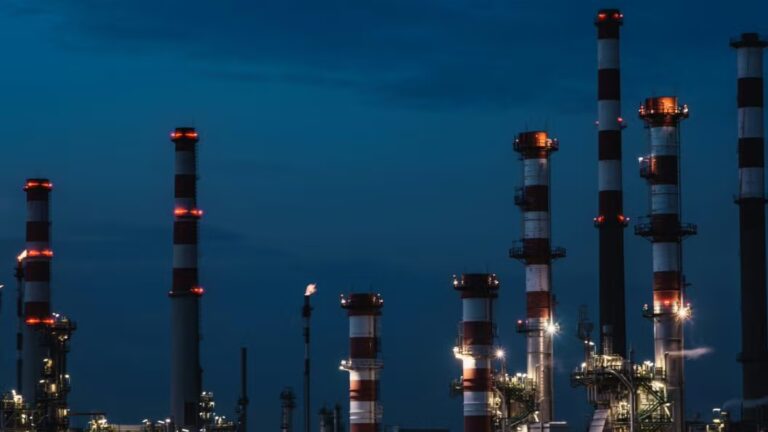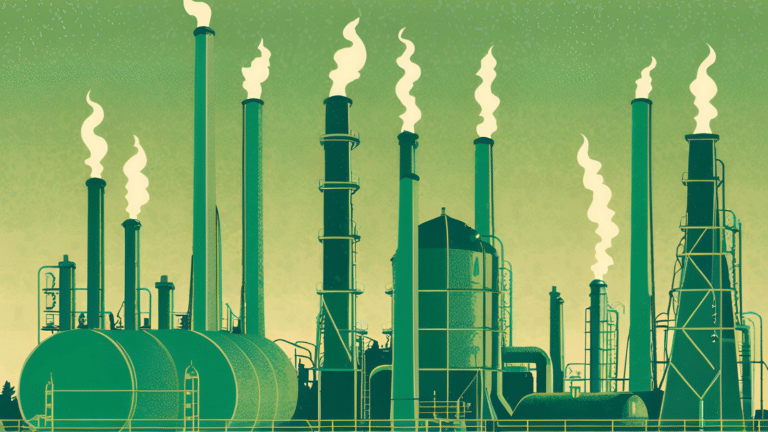Power prices are expected to soar under new tax cut and spending law
In states without policies to drive renewable energy, power prices could surge as federal tax incentives for clean energy disappear, according to Energy Innovation, a think tank.
Current Access Level “I” – ID Only: CUID holders, alumni, and approved guests only
Summaries by Jonathan Elkind • September 05, 2019
This roundtable report reflects the authors’ understanding of key points made in the course of the discussion. It does not necessarily represent the views of the Center on Global Energy Policy. The summary may be subject to further revision.
Contributions to SIPA for the benefit of CGEP are general use gifts, which gives the Center discretion in how it allocates these funds. More information is available on our Partners page. Rare cases of sponsored projects are clearly indicated.
As the Center on Global Energy Policy (CGEP) convened its fourth annual workshop on energy, the economy, and geopolitics in the Gulf Arab states, several factors formed the backbone of the discussion: the growing unpredictability of oil prices, rising calls to accelerate the transition to low-carbon energy systems, challenges facing the implementation of national economic reform programs, and the shifting of traditional geopolitical relationships. The workshop took place on March 7–8, 2019, at Columbia University in New York and was conducted under the Chatham House rule on nonattribution. This summary highlights the main issues that emerged during a working dinner program and a full-day roundtable discussion. CGEP is grateful for sponsorship support from the Kuwait Foundation for the Advancement of Sciences.
The oil and gas sector remains the economic cornerstone of the Gulf Arab states. The direction of global oil markets naturally occupied a fundamental position in the discussion. Many participants said they were concerned about price volatility while also flagging the growth of opportunities and activity in downstream markets, especially in crude to chemicals. One prominent company in the region plans to dedicate more than 50 percent of its production to petrochemical production within the coming decade.
A number of representatives from the Gulf Arab states, as well as commentators from outside the region, noted the considerable complications for company strategies and capital planning that arise from price turbulence. These complications were only reinforced by unknowns about the prospect of global economic trends, especially if the economy slides into recession.
The relationship between the Organization of the Petroleum Exporting Countries (OPEC) members and Russia—especially the durability of that relationship—emerged as a topic of debate. There were also questions around whether Russia’s evolving influence was proportional to, or greater than, the amount of effort (or “pain”) being borne by Russian producers. One participant noted that it is harder for Russian producers—especially those operating in the Arctic—to adjust production up and down to respond to market circumstances than it is for Gulf Arab state producers. So even if some analysts have previously viewed Russia’s engagement with OPEC with some skepticism, Russia is currently playing a very important role indeed. Russia’s willingness to engage with OPEC states in discussions about price and production levels is significant, many participants said; there is no need for a symmetrical relationship where Russia and the OPEC partners play equal roles.
Participants expected some Gulf Arab and other OPEC producers to increase liquids production in the coming year or two. Shrinking production from Venezuela has left room in the global market for such production increases even though many commentators see an overall softening of oil demand due to global macroeconomic trends. With no end in sight for Venezuela’s political challenges, oil production declines seem likely to continue.
Non-OPEC production will likely also rise, especially from the United States, where larger companies are playing progressively greater roles in the shale regions. Attendees said US liquids growth would continue despite questions about the adequacy of pipeline infrastructure for the evacuation of production.
Natural gas production should also grow, participants said. National oil companies from the region and international oil companies are all likely to seek greater gas production, and the increasing involvement of the majors in the US shale patch is expected to translate into greater financial and operational discipline. Several companies based in the Gulf Arab states are seeking to become natural gas producers and exporters, both from domestic upstream development and from investments elsewhere, including in Russia and the United States. The search for a lower-carbon future has in part motivated this growth, but the worldwide goal of reducing local air pollution has played an even more important role.
The global energy transition poses both challenges and opportunities for the countries of the Gulf Arab region. In recent years a new understanding of abundance and scarcity has emerged, ending the debate over the ability of hydrocarbon reserves to meet growing global demand. Instead, the debate has shifted to controlling the emissions of greenhouse gases (GHGs) from the burning of fossil fuels. What is in scarce supply is the atmosphere’s ability to absorb more GHG emissions.
This new reality has numerous implications. Participants noted the importance of engaging now in long-term research and development, such as the development of the economic case and related investment for hydrogen. First to emerge will be so-called blue hydrogen, produced through the reforming of methane from natural gas. Later, in tandem with carbon capture, utilization, and storage (CCUS), blue hydrogen could be supplanted by green hydrogen, which would not result in any harmful emissions. The scale and tempo of this evolution will reflect an interplay between technology development, costs, and policy drivers.
Looked at from the perspective of the Gulf Arab producers of oil and gas, the stakes are high, according to one participant: Application of clean energy technologies that reduce GHG emissions could enable a longer tail for the production and use of hydrocarbons in applications or settings where alternative technologies face high hurdles. This means that governments in the Gulf Arab states and elsewhere need to mobilize not only research and development funding but also guarantees and other instruments to incent deployment of low-carbon technologies. There is also a strong need for the development and deployment of negative emissions technologies, including direct air capture.
Some companies in the Gulf Arab region are already viewing the application of carbon capture for enhanced oil recovery as a strictly economic matter—something that helps their bottom line while also benefitting the climate. They have developed ambitious plans to grow their CCUS activities. Some companies in the region are also collaborating on cooperative research and development with the goal of discovering other pathways for large-scale utilization of captured CO2. According to recent scholarship, the Gulf Arab producers may have an inherent advantage in that their oil production may be among the lowest in carbon anywhere in terms of emissions per barrel produced.
Demand-side energy efficiency is another area of low-carbon growth where plentiful opportunities exist. At least one of the Gulf Arab states has sought to fill a previous policy void by developing a comprehensive energy efficiency program that addresses public awareness, appliance standards, building codes, vehicle efficiency, and even the efficiency of the transmission and distribution of power and water, as well as desalination. New investment vehicles have also been created to speed the application of new, efficient technologies and practices, for example, in public buildings. Some industrial players that are encountering new standards have not welcomed the new focus on efficiency, but the effort continues regardless.
Leaders in all the Gulf Arab states have clearly stated their intention to diversify and strengthen their macroeconomies. Results have varied from country to country. This has not been a simple process, and the possibility of slower economic growth across the region in 2019 has raised new headwinds. Nonetheless, ambitious goals persist—especially for growth in non-oil areas including tourism, health, and education.
Looser fiscal terms across the Gulf Arab region have generally helped to spur growth in the non-oil sector of the economies, with sectors adjacent to the hydrocarbons sector among the most successful. But non-oil activity has remained challenging in that it calls for skills not always found in plentiful supply in the region’s own labor force.
Private sector employment generally has not grown as rapidly as has been hoped, although attendees saw a new interest in some of the Gulf Arab states, especially among young people, in taking positions in manufacturing, petrochemicals, ports, and the maritime sector. The considerable gap between the cost of the expatriate and national labor remains a serious challenge to be overcome.
Some steps have been especially important as signals of the direction of policy. The introduction of certain fiscal measures in some of the countries (such as Saudi Arabia’s value-added tax, excise tax, and Citizen’s Account Program) has strengthened overall budgets, while progress on price reform has fostered the growth of the domestic market. In spite of these initial steps on economic diversification, however, the fiscal foundations of the Gulf Arab states will likely remain reliant for some time on hydrocarbon production.
In considering what lies ahead for the energy, economic, and geopolitical landscapes of the Gulf Arab states, several main themes emerged. One very prominent theme was that US attention and interest in the region has diminished. This trend began in the early 1990s, and it has numerous implications within the region, ranging from a confused and contradictory set of American policies toward the region to reduced priority placed on the economic stability and growth of the Gulf Arab states. Current confrontations between the US Congress and the executive branch are only exacerbating an already challenging situation.
Many participants commented on the particular significance of the fate of proposed NOPEC legislation (known formally as the No Oil Producing and Exporting Cartels Act). The underlying idea of removing sovereign immunity for state-owned enterprises has been debated for years and uniformly opposed by successive US presidents. One participant noted, however, that NOPEC has become an area of possible common ground between Congress and the current White House. One American participant raised the question of whether the United States had become the biggest wild card in the region.
Another theme that emerged was the challenge of relationships within the Gulf region. At the forefront are tensions between Iran on the one hand and the Kingdom of Saudi Arabia and the United Arab Emirates on the other. Tensions between Qatar and Saudi Arabia and the Emirates have also persisted, as has the economic boycott. Collaboration through structures such as the Gulf Cooperation Council has withered. Reversing this trend away from regional cooperation would require concerted diplomatic initiative from the level of national leaders. Anything less than top-level initiatives would not suffice to recreate space for more neighborly relations.
Participants also stressed the extraordinary growth in Russia’s diplomatic role in the Gulf region and the considerable growth in the commercial and economic role of China. Both of these major powers have developed ties to the Gulf Arab states that few analysts would have foreseen five years ago, and they seem likely to continue strengthening their relations in the coming five years as well.

Earlier this month, China convened its “two sessions”—the annual concurrent meetings of the National People’s Congress (NPC), China’s legislature, and the Chinese People’s Political Consultative Congress, a political advisor body.

During a speech at the World Economic Forum in Davos last month, President Donald Trump urged Saudi Arabia and OPEC to increase oil production to lower prices and exert economic pressure on Russia.

Full report
Summaries by Jonathan Elkind • September 05, 2019